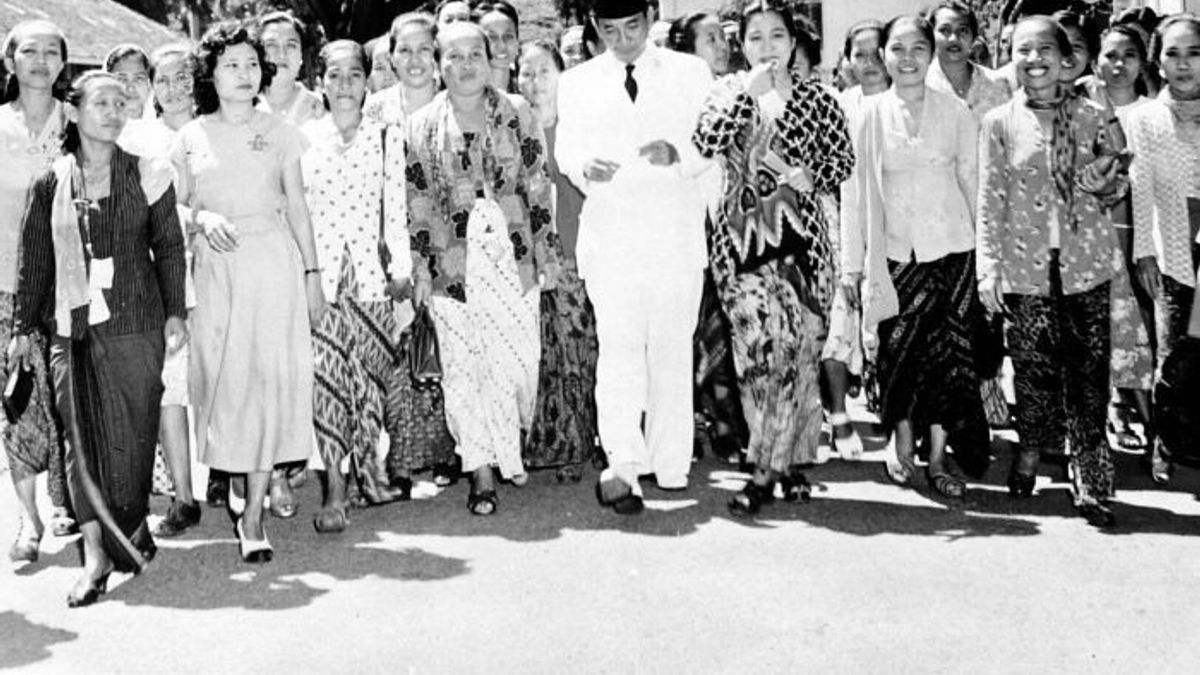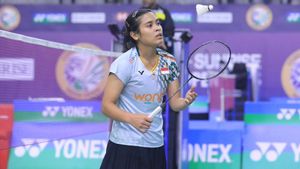JAKARTA - In Indonesia, clothes do not only function as body pads. Clothing is often used as a symbol of social and even political status. The development of the custom of dress has a big impact on social status.
However, this does not apply to Javanese clothing: the kebaya. It is widely known in the form of thin white clothes decorated with many embroidery, it turns out that in the 19th century - the era before Indonesian independence - kebaya had become a garment for all social classes, both Javanese and Indo women (a mixture of Dutch-Indonesian).
The popularity of the kebaya also attracted many European (Dutch) women. It was noted that after the end of the Java War in 1830, the wave of migration of European women became increasingly massive to the Dutch East Indies (Indonesia). Those who came later tried to adapt to life on the land of the colony, one of which was by wearing a kebaya.
“Photographs dating from the last quarter of the 19th century show European immigrants relaxing. The women wore kebaya and cloth. Meanwhile, the men wore batik pants and jackets without collars. They posed for a photo shoot with the waiters sitting cross-legged on the floor, ”said Jean Gelman Taylor in the book Social Life in Batavia (2008).
Kebaya as home clothesFurthermore, the kebaya was no longer a mere garment for Javanese women, but also a garment for white women, although the use of the kebaya was still limited. Quoted from Denys Lombard in the book Nusa Jawa: Cross Culture Volume 1 (1996), the Dutch who came to the archipelago also brought with them the habits of life that are typical of European lands.
Habits such as eating bread, drinking beer and wine which become high-value luxuries are maintained. Except in clothes. For European men, everyday dress does not really matter. However, for European women, they began to wear mixed clothes, namely the sarong-kebaya.
Those who wear the kebaya feel comfortable rather than having to force themselves to wear European clothes that are incompatible with the tropical climate. So, the kebaya is perfect as a garment that must be worn by European women when doing activities at home.

Unfortunately, the kebaya at that time was not yet a garment for attending a party. "In the field of clothing, especially women's clothing, it is clear that there is an evolution. European women, at least in public, refuse the kebaya sarong that is usually worn by the nyai. "
Not only Denys Lombard. Rudolf Mrázek in the book Engineers of Happy Land (2006) quotes the opinion of the Dutch lady, Catenius van der Meijden regarding the limited use of kebaya outside the home. For him, the use of the kebaya at that time was only comfortable to use at home and when he was sick.
“Only when sick, and while in their homes during the day, do many Europeans wear the popular Dutch Indies dress (sarong-kebaya). If a European, during the day - even though every [European] person has to wear European clothes - looks undressed, I mean dressed in the Indies way, it signals to everyone that this person is sick, "Rudolf said.
The origin of the kebaya
Regarding the origins of the kebaya, for details, we contact Makassar State University Anthropologist Dimas Ario Sumilih. From him we get the fact that in the development of the kebaya there is cultural interaction, namely there is contact, contact, hospitality, and the struggle of Javanese clothing cultures with Indians, Arabs, Chinese and Portuguese.
Along with the social relationships that were formed in the archipelago long before the colonial era of the Company, the tradition of dress among the native people underwent significant changes. That is why people can look directly at the reliefs on the temples and inscriptions related to dress. One of them can be learned from the reliefs of Prambanan Temple (Central Java).
To be more precise, Dimas said that around the 8th or 9th century, Indonesians already knew 'kulambi' which evolved when it became 'klambi' in Javanese which means clothes and 'sarwul' or 'sruwal' which means pants. "Then around the 15th or 16th century, appeared 'pantolan' for men's clothing and 'kebaya' for women's clothing, which looks better in covering the body parts, in line with the influence of Islamic culture."
The evidence that the kebaya experiences contact with other nations lies at the beginning of the word kebaya which is 'kabaya.' This word is allegedly derived from the Arabic vocabulary 'kaba' which means clothing.
However, it was the Portuguese who had a role in introducing kebaya to Java. Even so, there are also those who say that the kebaya is an intersection between the Javanese and the cloth pegadang from India.
"Kebaya can also be traced from" cambaya "which was introduced through an important port in India called Cambay Harbor. The port imports cotton cloth with flower motifs, ”Dimas told VOI, Friday, July 10.
Gradually, the kebaya also absorbed the influence of the loose, long-sleeved clothes worn by the Chinese. Due to this accumulation, in the end, the kebaya was then combined with other Javanese supporting appearance, namely, hair buns, crowns, hairpins, hair pins, crowns, and so on.
"As a result, these attributes cannot be separated from kebaya. This can be learned from the physical art of Wayang Purwo. In fact, the growing development of Islam in Java has also contributed to the modification of the kebaya with a variety of robes, turban and gamparan, "concluded Dimas.
The English, Chinese, Japanese, Arabic, and French versions are automatically generated by the AI. So there may still be inaccuracies in translating, please always see Indonesian as our main language. (system supported by DigitalSiber.id)









